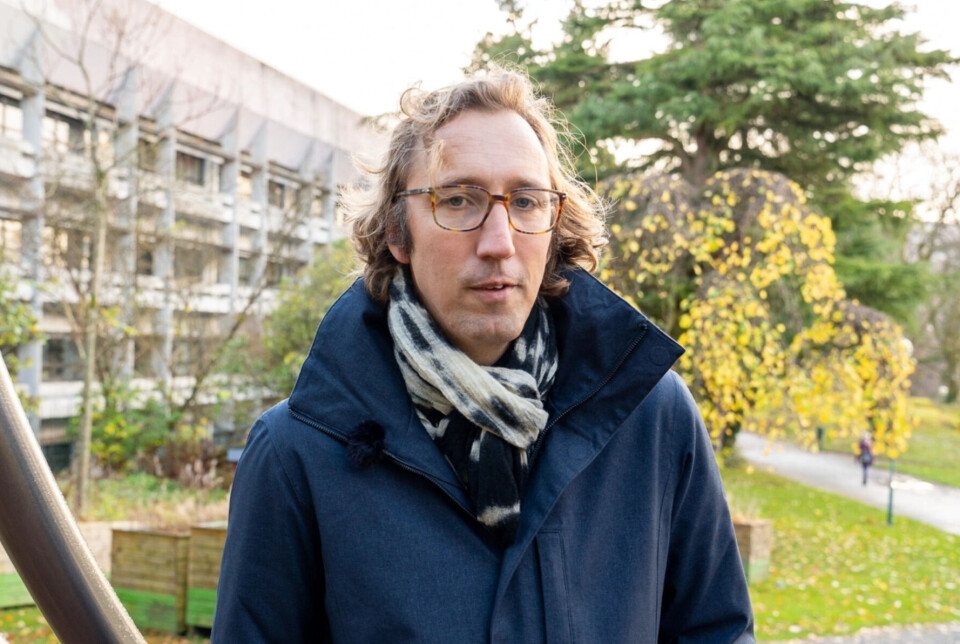THIS CONTENT IS BROUGHT TO YOU BY the University of Bergen - read more
Surprising discovery in an Arctic lake during the last Ice Age
Researchers discovered that plants and algae survived in a small Arctic lake during the coldest period of the last Ice Age, when the area was believed to be completely covered by ice.

“We thought this part of the Arctic was hidden under kilometres of ice during the last glacial maximum, the coldest phase of the last Ice Age, between 20,000 and 29,000 years ago. But then we stumbled upon sediments deposited during this time in a small lake that existed on Svalbard,” says Willem van der Bilt.
He is a research professor at the University of Bergen and the Bjerknes Centre for Climate Research.
The sediments were collected in 2012, and the first publication about this unique lake came in 2019. But already at that point, van der Bilt was mostly interested in understanding why this environment existed and what lived there.

Optimising lab techniques
Van der Bilt has now published a new paper that tells this story and shows how life survived – in the water, beneath, and along permanent lake ice.
It took a few years to put this study together, as there was little sediment to analyse from this extreme environment. This meant that lab techniques had to be optimised.
“We wanted to squeeze every drop of measurable material from this mud,” he explains.
Greenhouse effect
What van der Bilt and his co-authors found turned the traditional interpretation of the methods they used upside down.
“We used fats from fossil algae to find out what water temperatures were and found that they were way too warm. In addition, the distribution of leaf wax molecules indicated big shifts in water availability, while the presence of ions that make up salt, elements like bromide or chloride, was very high,” he says.
All the above interpretations pointed the researchers in one direction: A permanently ice-covered lake that trapped the heat from sunlight, warming the water, and allowing photosynthesis to occur so that life could survive through very short summers.
“You could say it was like a greenhouse effect under the lake ice,” van der Bilt explains.
Surviving in an extreme environment
He explains that every time the lake thaws a little and then freezes again, salts are left behind. Salt is not part of the refreezing process.
Over thousands of years, these salts sink to the bottom of the lake. As a result, the bottom waters of these lakes became very salty.
And a few weeks a year, you get a tiny moat of liquid water around the edge of the lake that makes it possible for some plants to grow.
Filling knowledge gaps
These findings offer new insight into how life can survive and maybe even thrive in extreme environments.
Also, the existence of a lake ecosystem in the Arctic during the coldest phase of the last Ice Age highlights potential gaps in our understanding of what makes ice sheets grow.
“It was definitely cold enough, at least eight degrees colder than today, and this place remains a polar desert. But it was likely too dry at the time, so little snow fell to help build up big glaciers and ice sheets,” says van der Bilt.
He notes that although more research is needed to draw definitive conclusions, we should not consider Ice Age Svalbard as an island like it is today, since it was surrounded by permanent sea ice that did not allow any moisture to move from the ocean to the atmosphere.
Reference:
Van der Bilt et al. High Arctic Lake sediments show that Heinrich Event 2 was preceded by summer warming, Communications Earth & Enironment, vol. 6, 2025. DOI: 10.1038/s43247-025-02440-9
Van der Bilt, W.G.M. & Lane, C.S. Lake sediments with Azorean tephra reveal ice-free conditions on coastal northwest Spitsbergen during the Last Glacial Maximum, Science Advances, vol. 5, 2019. DOI: 10.1126/sciadv.aaw5980

This content is paid for and presented by the University of Bergen
This content is created by the University of Bergen's communication staff, who use this platform to communicate science and share results from research with the public. The University of Bergen is one of more than 80 owners of ScienceNorway.no. Read more here.
More content from the University of Bergen:
-
The West influenced the Marshall Islands: "They ended up creating more inequality"
-
Banned gases reveal the age of water
-
Researchers discovered extreme hot springs under the Arctic
-
Tiny particles unlock vinegar’s hidden healing potential
-
“Why doesn't it rain more?” asks researcher
-
Uncovering the hidden female influence in medieval literature




































